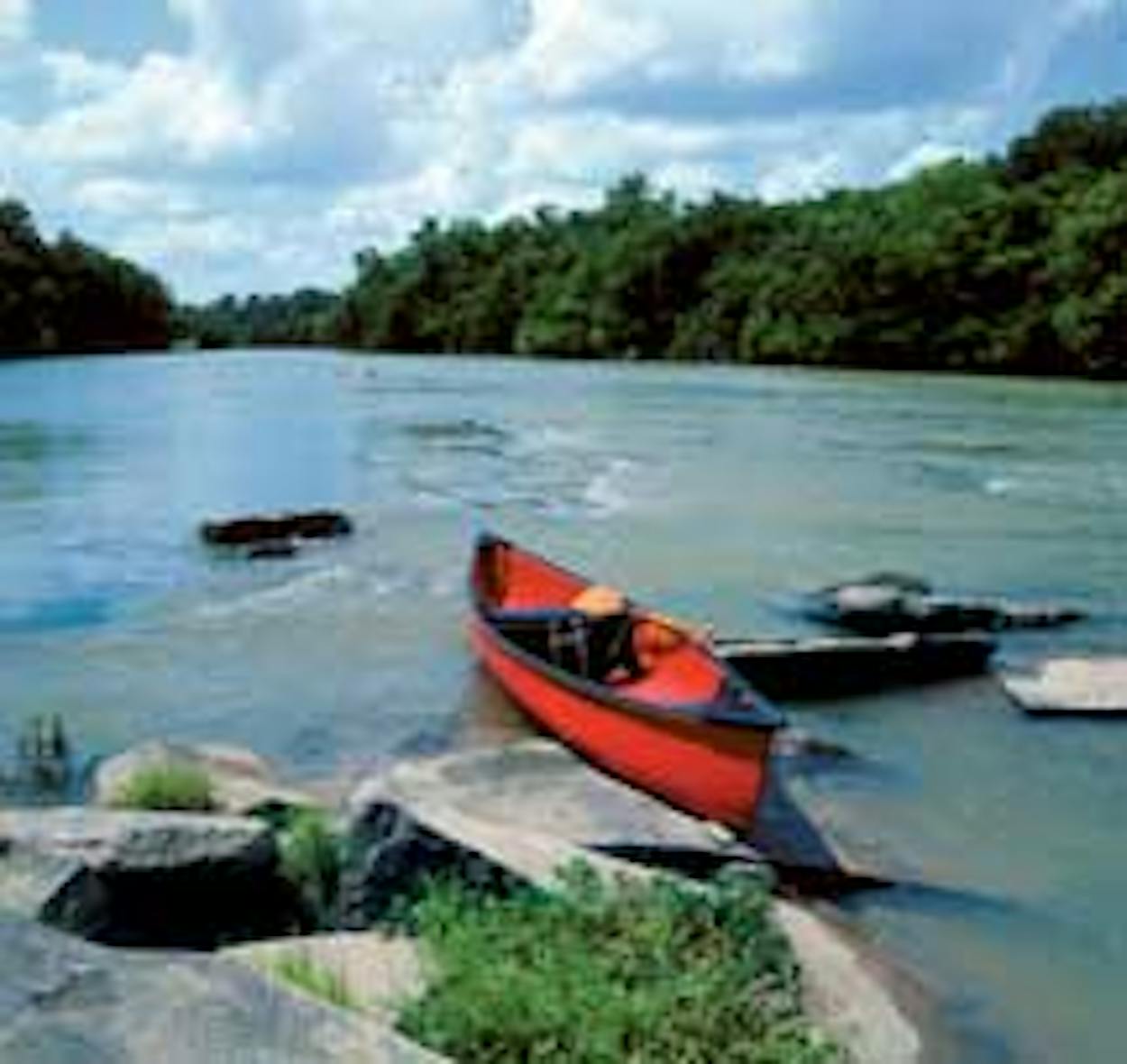My recent canoe trip on the Colorado River at Columbus was so effortless it seemed more of a thought than an action. For one thing, right at the put-in sat Howell Canoe Livery, whose cheerful proprietor outfitted me with a pristine canoe, carried it down the hill, held it steady at the dock while I stepped in, and fetched me at nearby Beason’s Park when I was finished. The river itself bent over backward to please, looping so extravagantly out north from town and back again that although I covered more than six miles of river in two hours, my trip ended less than a mile from where I had launched. Except for a couple of rippled patches that hiked my adrenaline level slightly above snooze mode and a brief headwind that required one spurt of exertion, I glided along with my paddle across my lap more often than in the water, drifting past white-faced cows, plowed fields, and sun-drenched sandbars. All I lacked was a frilly parasol and a book of poetry.
Despite the river’s cozy relationship with downtown Columbus, which is about seventy miles west of Houston, only a handful of man-made structures intruded on the trip: a few homes, a train trestle, a bridge. Man in the flesh was even scarcer; I saw no one on the river. (Of course, it was the middle of winter. Come spring and summer, you can expect fellow travelers, along with wildflowers and lots of greenery.) But birds? The area was downright lousy with them: kingfishers, hawks, great blue herons, sandpipers, killdeers, and egrets, all busy rustling up dinner. I even spied a bald eagle taking in the sights from the top of a tree. I also saw zillions of beavers and alligators, which shape-shifted into hunks of driftwood when I came too close. And who knows what critters lurked up Cummins Creek, but the narrow tributary was so pumped up by the rain that had fallen the night before that I would never have made headway against the flow.
On top of all this, this part of the Colorado has history to spare. Somewhere along the route (or else eight miles south of town or perhaps a couple of miles north—why can’t historians ever agree?) Sam Houston’s and Santa Anna’s troops set up camp practically across the river from each other in March 1836. Although some in the Texian army were eager to attack, legend has it that one of Houston’s scouts climbed a tree to watch a parade-like commotion on the Mexican side. Convinced that reinforcements were arriving, Houston decided to pull back and bide his time. Two words—“San Jacinto”—are all you need to know about the outcome of that delay.
So it’s no wonder that Texas Parks and Wildlife named this well-behaved stretch of river a Texas Paddling Trail, a title requiring certain civilized characteristics, among them adequate water quality and flow, convenient public access, and natural or historic attractions. To date, only five other inland trails have qualified for this goody-canoe-shoes seal of approval: the Guadalupe River at Victoria and at Spring Branch, the San Antonio River at Goliad, the San Marcos River at Luling, and, again, the Colorado River, this time at Bastrop.
The ease of these designated paddling trails probably wouldn’t appeal to those whose judgment is addled by surplus testosterone. (For you risk takers who demand the unexpected, may I suggest the Neches, near the East Texas town of Diboll? I flirted with paddling it until I was told I should take a chain saw with me to clear possible logjams, that public access points are days apart, and that some private landholders along that river frown upon trespassers.) For the rest of us—those with families in tow, a belief in our own mortality, or parasols to flaunt—the smooth sailing this stretch of the Colorado offers is surprise enough.
Howell Canoe Livery
Open daily 8–5. Canoes $35 a day, solo kayaks $20, and tubes $10. Rentals include paddles, map, life jackets, cell phone case, and shuttle from Beason’s Park back to launch. Reservations recommended. No tube rentals after 12:30 p.m. Takeout time is 5 p.m. 804 Robson, 979-732-3816 or howellcanoe.com (for information on other Texas Paddling Trails, visit tpwd.state.tx.us/fishboat/boat/paddlingtrails).
While you’re in the neighborhood
The oak-filled town of Columbus, settled by a group of Stephen F. Austin’s Old Three Hundred, oozes history—despite the fact that Houston torched it to the ground during his retreat. More than 110 historical markers introduce you to a slew of oldies, such as the District Court Tree, which sheltered judge and juries in 1837, and the Stafford Opera House, which was built in 1886 and now hosts a dinner theater. Several of the historic homes open their doors to visitors during the Texas Live Oak Festival each May (Columbus Convention and Visitors Bureau, 979-732-8385 or columbustexas.org). For onboard paddling fuel, grab a sandwich downtown at Keyser’s Meat Market (1116 Milam, 979-732-2658) or hold off for an après-float dinner in nearby New Ulm (a village so cute I want to be its agent) at the Texas Star Café (24131 Bastrop Road, fifteen miles north of Columbus off Texas Highway 109; 979-992-3522).







